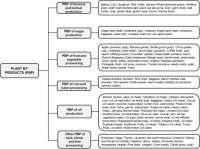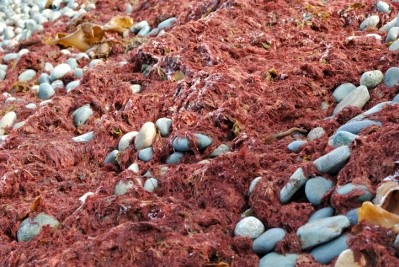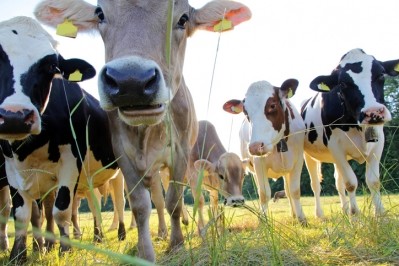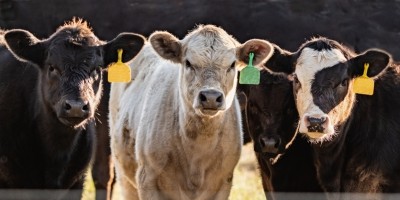Review: Plant by-products could mitigate environmental impact of ruminant diets

The researchers involved were based in Italy, the UK and Ireland. Their work was published this month in Animal Feed Science and Technology.
The waste streams to be tapped for plant by-products, they explained, include agro-industrial processes such as brewery and biofuel production, fruit and vegetable processing, sugar production, root and tuber processing, and herb, spice and tree processing.

“The microbial population in the forestomach (rumen) of ruminants allow PBP to be used effectively compared to monogastric livestock.”
Some PBPs contain bioactive compounds such as unsaturated fatty acids (FA) and phytochemicals. Feeding innovations based on the use of bioactive-rich PBP would reduce enteric methane and nitrogen emissions while improving the nutritional fat composition and shelf-life quality of meat for better consumer health and satisfaction, they said.
“To realise these dual benefits, future studies are necessary to explore dietary combinations of distillers’ grains, crude glycerine, cottonseed meal, olive cake, citrus pulp, pomegranate by-product, distillation by-product of sage, thyme and rosemary, carob pulp, and tea by-products. Furthermore, the potential effects of PBP on animal productivity require clarification with respect to their inclusion level in ruminant diets.”
While they see that dietary PBP exhibit marginal or no detrimental effect on the sensory characteristics and acceptability of fresh meat, the team future studies should assess consumer acceptance of emerging PBP especially those from herb and spice processing which could affect meat flavor.
They said the livestock and meat industry can explore the potential of promoting meat from animals fed certain threshold levels of PBP as eco-friendly and functional foods. “This could create a distinct market niche for premium-priced meat products.”
Constraints
More comprehensive studies, though, are needed to document local availability of plant by-products in different regions of the world and to determine the possible factors limiting their respective use in feeds, they said.
In addition, collaboration between engineers and animal scientists will be required to develop cost-effective and energy-efficient technologies for processing PBP into suitable animal feed, said the team.
The use of PBP as animal feeds should be mostly localized because feed transport represents a significant hotspot for reducing greenhouse gas (GHG) emissions, stressed the reviewers.
LCA modelling
The reviewers generated data using an international life-cycle assessment (LCA) model to show that replacement forages and fodder crops with PBP could improve the environmental sustainability of ruminant meat production systems in the US.
“We postulated that increasing dietary replacement of conventional forages and fodders with PBP could further improve the environmental performance of ruminant meat production. To test this hypothesis, we assessed the environmental impacts of increasing substitution of PBP against conventional roughages in the rations of meat-producing ruminants using the Global Livestock Environmental Assessment Model (GLEAM).”
GLEAM was developed by the UN’s Food and Agriculture Organization (FAO) as an LCA simulation tool that allows for the quantification of multiple environmental impacts of livestock production.
“We designed three feeding intervention scenarios (FIS) which were assessed in the model by increasing the feeding levels of PBP as a replacement for fresh grass, hay, and silage in the rations of beef cattle, sheep meat, and goat meat herds. It should be noted that the current version of GLEAM only allows for the selection of a broad category of PBP, such as dry by-products from grain industries.”
The US was selected as the reference country: The reviewers said the results showed that increasing levels of plant by-products resulted in a linear decrease in total GHG emissions from beef cattle, sheep meat, and goat meat herds.
“The decrease in GHG losses was largely related to a reduction in total N2O emissions in all ruminant meat systems assessed. This was mainly attributed to decrease in N2O emissions from fertilization and crop residues, manure application and deposition.”
But the authors note that GLEAM does not account for the impact on other environmental categories such as biodiversity loss, acidification potential, eutrophication potential, and water use. “The adoption of feeding strategies based on high inclusion levels of PBP in ration formulation also demands adequate consideration in terms of the nutritional effect on animal productivity.”
Source: Animal Feed Science and Technology.
Published online ahead of print: https://doi.org/10.1016/j.anifeedsci.2019.02.006
Title: Sustainability of feeding plant by-products: A review of the implications for ruminant meat production
Authors: S.A. Salami, G. Luciano, M.N. O'Grady, L. Biondi, C.J. Newbold, J.P. Kerry, A. Priolo















